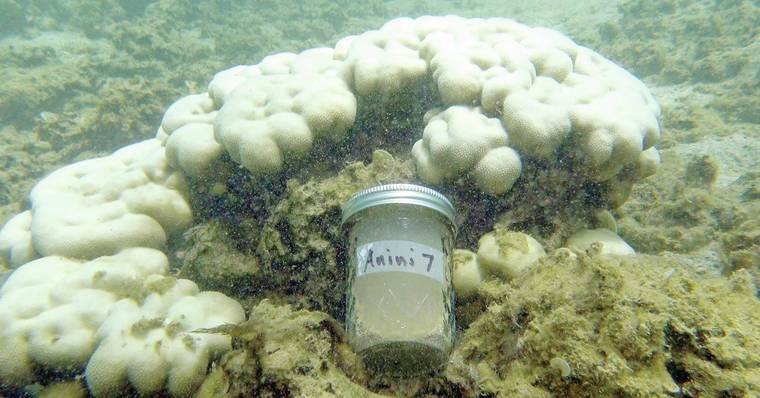Eyes on the reefs
 Partners with Reef Guardian Hawaii secured funding to do a chemical testing study at Anini Beach on Kaua‘i following a fall coral bleaching event they documented, above. Image courtesy of Terry Lilley / Special to The Garden Island
Partners with Reef Guardian Hawaii secured funding to do a chemical testing study at Anini Beach on Kaua‘i following a fall coral bleaching event they documented, above. Image courtesy of Terry Lilley / Special to The Garden IslandThe sediment in Anini’s shallow lagoon on Kaua‘i could be saturated with heavy metals, according to results from a study conducted through volunteers with the nonprofit Reef Guardians Hawaii.
Sediment samples were taken from the Anini reef on Kauai’s North Shore in August after underwater photographer Terry Lilley documented a coral-bleaching event in the area. The reef holds just some of the corals in Hawai‘i waters that are experiencing bleaching in the midst of a marine heat wave that has encompassed the islands.
The sediment test is one of many research projects with multiple organizations and universities worldwide, all working toward the same end goal of understanding how corals are impacted by not only marine heat waves, but by other factors in the environment.
Ocean-goers and scientists started seeing bleaching in May 2019. In September, the School of Ocean and Earth Science and Technology released what they called the largest study of coral communities, which identified ways to protect coral reefs. The study cites climate change and human impacts as major threats to the reefs, specifically increasing carbon emissions, overfishing, pollution and unsustainable development. Authors also suggest three ways to combat those threats — protect, recover and transform.
“The study provides a roadmap for reef managers to identify areas that can benefit from active management practices at a local scale while also preparing for potential future impacts from increasing climate hazards,” stated Erik Franklin, co-author of the study and assistant research professor at the Hawai‘i Institute of Marine Biology (HIMB), in a release about the study.
Read more about it in The Garden Island.




